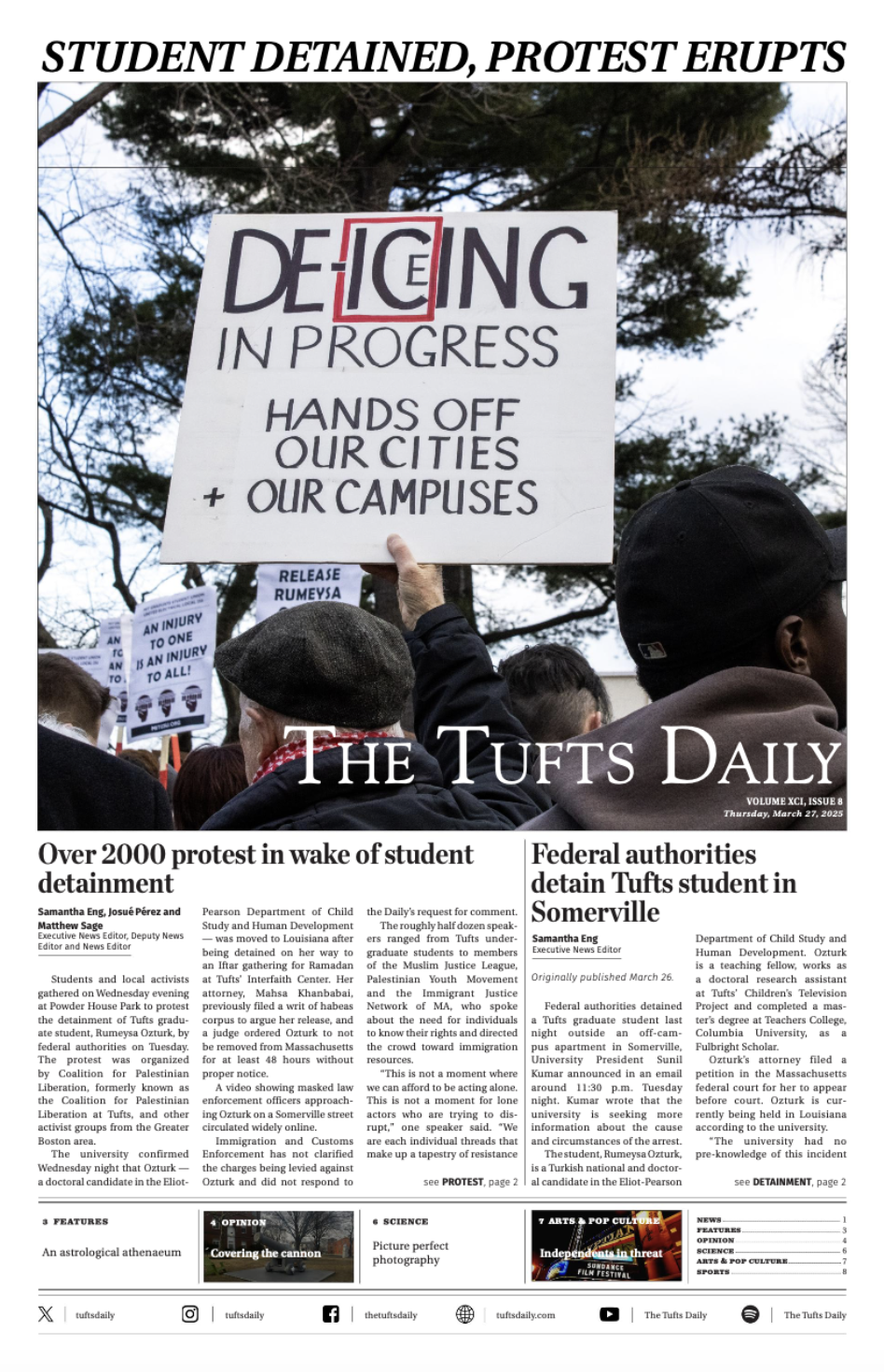I used to write for this paper. It was the pride and joy of my last few semesters at Tufts. As an alumnus, I’m still an avid reader of the paper, and I was drawn to what one columnist had to say about education. In the latest edition of “The Death of Education,” the author expressed his support for the end of affirmative action and posited that a slew of other problems ought to be addressed to close the achievement gap.
Postgraduation, I’m one of those “inadequate teachers” to low-income students the columnist speaks of. He’s right to point out that these issues are important, but these issues don’t live in isolation and are oftentimes the very reason affirmative action is necessary. That is to say, the argument lacks critical context.
I teach at an elementary school in South Los Angeles that’s been deemed one of the Los Angeles Unified School District’s priority schools because of low test scores, a high percentage of English language learners and high absenteeism rates. The statistics paint a grim picture: Just over 2% of students are at or above grade level for math, just under 12% are at or above grade level for reading and over 60% of students are chronically absent, classified by the district as missing at least 15 days of school.
My students receive free breakfast and lunch and are given school supplies, including Chromebooks, by the district. If it was a lack of resources that hindered these kids, why are their test scores still so low? Brand-new supplies and free food are great, but they don’t resolve the behavioral issues that eat up our instructional time and rob some students of their education.
You can ask any teacher about their first year and they’ll have many a horror story to tell you. I’m no exception. On the first day of school, a fight broke out between my fourth graders and there was blood on the floor of my classroom. The second week, one of my students told me about her older sister who lives in another country — one without an extradition treaty with the United States — and can’t return home, because she robbed a bank. Just last week, another one of my students, a foster child who has bounced around homes, threatened to kill me and beat up another student.
As one of my instructional coaches always says: Teaching is a work of heart. These kids need a whole lot of love and an adult who won’t give up on them. I’ve got veteran teachers to my left and veteran teachers to my right. We’ve got math and reading coaches who work with kids in small groups for an hour every day, but our test scores are still lagging far behind where they should be. The answer isn’t to point fingers at apathetic teachers, dilapidated schools or school districts with burdensome regulations — it’s to understand that it takes a village to raise or educate a child.
To suggest that we don’t need affirmative action, we just need better teachers or other interventions closer to the source of the problem, is laughable. It’s easy to point out a problem when you don’t have to come up with a solution. My colleagues and I don’t have that luxury. The work isn’t easy, and I’ve already driven home in tears multiple times because I feel like I’ve failed my students. Teachers in schools like mine have been dealt a near impossible hand, and we’re trying our best to tackle the issue little by little. However, addressing the achievement gap is an issue that we cannot fix alone. It’s going to take structural change to get that done.
It’s reforms like affirmative action that get us a little closer to that goal. It gives students like mine a fighting chance when it’s their turn to apply to college. How could kids with messy, chaotic home lives even compete with the rich kids from where I grew up just a few miles away? When we talk about who’s qualified or not to go to a certain college, we make a series of assumptions about how students come to the table.
I’m well aware that Harvard University used its affirmative action policies to discriminate against Asian American applicants; I won’t deny that. However, imperfect as it may be, banning affirmative action was not the answer. So often the debate around affirmative action is reduced to a caricatured image of a dumb Black kid who takes a spot at Harvard from a brilliant Asian kid. Not only does this insidious framing lean into age-old racial stereotypes of both groups, but it’s flat out wrong. Affirmative action has always been a leg up for the disadvantaged, not a handout to the undeserving.
I’ll leave you with one more story. One of my toughest students recently told me that his mother is already saving up for his college fund. It breaks my heart that many of his former teachers and the support staff at my school tell me he’s nothing but trouble. Any label, when repeated enough times, sticks with you. For a little Black boy in South LA who’s two grade levels behind and living in a nation where one out of every three Black men will face imprisonment, the odds aren’t high that he’ll go to college at all.
My kids are resilience in the flesh, but some obstacles cannot be overcome. Tufts students care about their communities and the world around them, I’ve seen it up close and personal.
So when we debate issues like affirmative action, let’s remember that real people, real stories, lie at the heart of every policy initiative.




